| Weight | 1 lbs |
|---|---|
| Dimensions | 9 × 5 × 2 in |
| host | mouse |
| isotype | IgG2a |
| clonality | monoclonal |
| concentration | 1 mg/mL |
| applications | ICC/IF, WB |
| reactivity | Clostridium difficile Toxin A |
| available sizes | 100 µg |
mouse anti-Clostridium difficile Toxin A monoclonal antibody (PCG4) 9348
$508.00
Antibody summary
- Mouse monoclonal to Clostridium difficile Toxin A
- Suitable for: ICC/IF,ELISA
- Isotype: IgG2a
- 100 µg
mouse anti-Clostridium difficile Toxin A monoclonal antibody (PCG4) 9348
| antibody |
|---|
| Tested applications ICC/IF,ELISA |
| Recommended dilutions ELISA: for detection use at 1-10ug/ml Immunoblotting: use at 0.5-2ug/ml. Immunofluorescence: use at 1-5ug/ml. These are recommended concentrations. End users should determine optimal concentrations for their applications. |
| Immunogen Toxin A purified from culture filtrates of C. difficile 10463 and inactivated with 0.4 |
| Size and concentration 100µg and 1 mg/mL |
| Form liquid |
| Storage Instructions These antibodies are stable for at least one (1) year at -20° to -70°C. Store product in appropriate aliquots to avoid multiple freeze-thaw cycles. |
| Storage buffer PBS, pH 7.2, 0.1% NaN3. |
| Purity protein affinity purification |
| Clonality monoclonal |
| Isotype IgG2a |
| Compatible secondaries goat anti-mouse IgG, H&L chain specific, peroxidase conjugated polyclonal antibody 5486 goat anti-mouse IgG, H&L chain specific, biotin conjugated, Conjugate polyclonal antibody 2685 goat anti-mouse IgG, H&L chain specific, FITC conjugated polyclonal antibody 7854 goat anti-mouse IgG, H&L chain specific, peroxidase conjugated polyclonal antibody, crossabsorbed 1706 goat anti-mouse IgG, H&L chain specific, biotin conjugated polyclonal antibody, crossabsorbed 1716 goat anti-mouse IgG, H&L chain specific, FITC conjugated polyclonal antibody, crossabsorbed 1721 |
| Isotype control Mouse monocolonal IgG2a - Isotype Control |
| target relevance |
|---|
| Protein names Toxin A (EC 3.4.22.-) [Cleaved into: Glucosyltransferase TcdA (EC 2.4.1.-)] |
| Gene names tcdA,tcdA toxA |
| Protein family Clostridial glucosylating toxin (LCGT) family |
| Mass 308056Da |
| Function FUNCTION: [Toxin A]: Precursor of a cytotoxin that targets and disrupts the colonic epithelium, inducing the host inflammatory and innate immune responses and resulting in diarrhea and pseudomembranous colitis (PubMed:20844489). TcdA and TcdB constitute the main toxins that mediate the pathology of C.difficile infection, an opportunistic pathogen that colonizes the colon when the normal gut microbiome is disrupted (PubMed:19252482, PubMed:20844489). Compared to TcdB, TcdA is less virulent and less important for inducing the host inflammatory and innate immune responses (PubMed:19252482). This form constitutes the precursor of the toxin: it enters into host cells and mediates autoprocessing to release the active toxin (Glucosyltransferase TcdA) into the host cytosol (By similarity). Targets colonic epithelia by binding to some receptor, and enters host cells via clathrin-mediated endocytosis (By similarity). Binding to LDLR, as well as carbohydrates and sulfated glycosaminoglycans on host cell surface contribute to entry into cells (PubMed:16622409, PubMed:1670930, PubMed:31160825). In contrast to TcdB, Frizzled receptors FZD1, FZD2 and FZD7 do not act as host receptors in the colonic epithelium for TcdA (PubMed:27680706). Once entered into host cells, acidification in the endosome promotes the membrane insertion of the translocation region and formation of a pore, leading to translocation of the GT44 and peptidase C80 domains across the endosomal membrane (By similarity). This activates the peptidase C80 domain and autocatalytic processing, releasing the N-terminal part (Glucosyltransferase TcdA), which constitutes the active part of the toxin, in the cytosol (PubMed:17334356, PubMed:19553670, PubMed:27571750). {ECO:0000250|UniProtKB:P18177, ECO:0000269|PubMed:16622409, ECO:0000269|PubMed:1670930, ECO:0000269|PubMed:17334356, ECO:0000269|PubMed:19252482, ECO:0000269|PubMed:19553670, ECO:0000269|PubMed:20844489, ECO:0000269|PubMed:27571750, ECO:0000269|PubMed:27680706, ECO:0000269|PubMed:31160825}.; FUNCTION: [Glucosyltransferase TcdA]: Active form of the toxin, which is released into the host cytosol following autoprocessing and inactivates small GTPases (PubMed:22267739, PubMed:22747490, PubMed:24905543, PubMed:30622517, PubMed:7775453). Acts by mediating monoglucosylation of small GTPases of the Rho family (Rac1, RhoA, RhoB, RhoC, Rap2A and Cdc42) in host cells at the conserved threonine residue located in the switch I region ('Thr-37/35'), using UDP-alpha-D-glucose as the sugar donor (PubMed:22267739, PubMed:22747490, PubMed:24905543, PubMed:30622517, PubMed:7775453). Monoglucosylation of host small GTPases completely prevents the recognition of the downstream effector, blocking the GTPases in their inactive form, leading to actin cytoskeleton disruption and cell death, resulting in the loss of colonic epithelial barrier function (PubMed:7775453). Also able to catalyze monoglucosylation of some members of the Ras family (H-Ras/HRAS, K-Ras/KRAS and N-Ras/NRAS), but with much less efficiency than with Rho proteins, suggesting that it does not act on Ras proteins in vivo (PubMed:30622517). {ECO:0000269|PubMed:22267739, ECO:0000269|PubMed:22747490, ECO:0000269|PubMed:24905543, ECO:0000269|PubMed:30622517, ECO:0000269|PubMed:7775453}. |
| Catalytic activity CATALYTIC ACTIVITY: [Glucosyltransferase TcdA]: Reaction=L-threonyl-[protein] + UDP-alpha-D-glucose = 3-O-(alpha-D-glucosyl)-L-threonyl-[protein] + UDP + H(+); Xref=Rhea:RHEA:64684, Rhea:RHEA-COMP:11060, Rhea:RHEA-COMP:16656, ChEBI:CHEBI:15378, ChEBI:CHEBI:30013, ChEBI:CHEBI:58223, ChEBI:CHEBI:58885, ChEBI:CHEBI:156085; Evidence={ECO:0000269|PubMed:22267739, ECO:0000269|PubMed:22747490, ECO:0000269|PubMed:24905543, ECO:0000269|PubMed:30622517, ECO:0000269|PubMed:7775453}; PhysiologicalDirection=left-to-right; Xref=Rhea:RHEA:64685; Evidence={ECO:0000269|PubMed:22267739, ECO:0000269|PubMed:22747490, ECO:0000269|PubMed:24905543, ECO:0000269|PubMed:30622517, ECO:0000269|PubMed:7775453}; |
| Subellular location SUBCELLULAR LOCATION: [Toxin A]: Secreted {ECO:0000269|PubMed:22685398}. Host endosome membrane {ECO:0000250|UniProtKB:P18177}. Note=Secreted from C.difficile cell into the extracellular environment via help of holin-like protein TcdE/UtxA (PubMed:22685398). Binds to the cell surface receptors via the receptor-binding region and enters the cells via clathrin-mediated endocytosis (PubMed:20498856). Acidification in the endosome triggers conformational changes that promote the membrane insertion of the translocation region, allowing formation of a pore, leading to translocation of the GT44 and peptidase C80 domains across the endosomal membrane (By similarity). 1D-myo-inositol hexakisphosphate-binding (InsP6) activates the peptidase C80 domain and autoprocessing, generating the Glucosyltransferase TcdA form, which is released in the host cytosol (PubMed:19553670). {ECO:0000250|UniProtKB:P18177, ECO:0000269|PubMed:19553670, ECO:0000269|PubMed:20498856, ECO:0000269|PubMed:22685398}.; SUBCELLULAR LOCATION: [Glucosyltransferase TcdA]: Host cytoplasm, host cytosol {ECO:0000250|UniProtKB:P18177}. Host cell membrane {ECO:0000250|UniProtKB:Q46342}; Peripheral membrane protein {ECO:0000250|UniProtKB:Q46342}; Cytoplasmic side {ECO:0000250|UniProtKB:Q46342}. Note=Binding to phospholipids, such as phosphatidylserine and phosphatidic acid promotes localization to the inner face of the cell membrane close to its membrane anchored substrates (small GTPases). {ECO:0000250|UniProtKB:Q46342}. |
| Structure SUBUNIT: [Toxin A]: Interacts with host LDLR; LDLR probably does not constitute a major receptor but may contribute to entry into cells. {ECO:0000269|PubMed:31160825}. |
| Post-translational modification PTM: [Toxin A]: Undergoes autocatalytic cleavage to release the N-terminal part (Glucosyltransferase TcdA), which constitutes the active part of the toxin, in the host cytosol (PubMed:17334356, PubMed:19553670, PubMed:22267739, PubMed:27571750). 1D-myo-inositol hexakisphosphate-binding (InsP6) activates the peptidase C80 domain and promotes autoprocessing (PubMed:17334356, PubMed:19553670). {ECO:0000269|PubMed:17334356, ECO:0000269|PubMed:19553670, ECO:0000269|PubMed:22267739, ECO:0000269|PubMed:27571750}. |
| Domain DOMAIN: [Toxin A]: Consists of 4 functional domains: (1) the N-terminal GT44 domain (glucosyltransferase, also named GTD), which mediates glucosylation of host small GTPases, (2) an autoprocessing region that catalyzes autoprocessing to release the N-terminal GT44 domain in the host cytosol, (3) the translocation region that forms a pore to promote translocation of the GT44 and peptidase C80 domains across the endosomal membrane and (4) the receptor-binding (CROPS) region that mediates binding to host cells and contribute to entry into cells. {ECO:0000303|PubMed:29146177}.; DOMAIN: [Toxin A]: The receptor-binding (CROPS) region is dynamic and can have open and closed conformations depending of the pH: has an open conformation at endosomal pH and a closed conformation at neutral pH. {ECO:0000250|UniProtKB:P18177}.; DOMAIN: [Toxin A]: The cell wall-binding repeats bind carbohydrates, such as Galalpha1-3Galbeta1-4GlcNAc, probably contributing to entry into cells. {ECO:0000269|PubMed:16622409, ECO:0000305|PubMed:1670930}.; DOMAIN: [Glucosyltransferase TcdA]: The four-helical bundle region mediates binding to phospholipids, such as phosphatidylserine and phosphatidic acid (PubMed:25882477). This promotes localization to the inner face of the cell membrane close to small GTPases (By similarity). {ECO:0000250|UniProtKB:Q46342, ECO:0000269|PubMed:25882477}. |
| Target Relevance information above includes information from UniProt accession: P16154 |
| The UniProt Consortium |
Data
| No results found |
Publications
Warning: Cannot modify header information - headers already sent by (output started at /www/benchmarkantibodiescom_769/public/wp-includes/script-loader.php:3015) in /www/benchmarkantibodiescom_769/public/wp-content/plugins/shortcode-manager/shortcode-manager.php(453) : eval()'d code on line 3
Publications
| pmid | title | authors | citation |
|---|---|---|---|
| We haven't added any publications to our database yet. | |||
Protocols
| relevant to this product |
|---|
| Western blot IHC ICC |
Documents
| # | SDS | Certificate | |
|---|---|---|---|
| Please enter your product and batch number here to retrieve product datasheet, SDS, and QC information. | |||
Only logged in customers who have purchased this product may leave a review.
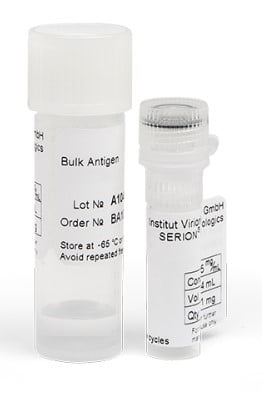
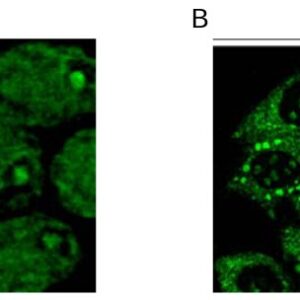

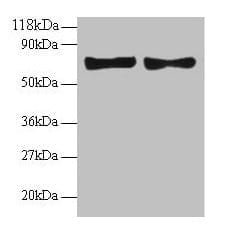
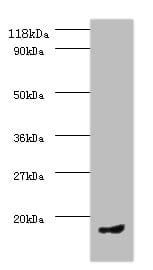

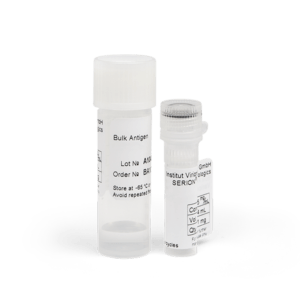

Reviews
There are no reviews yet.